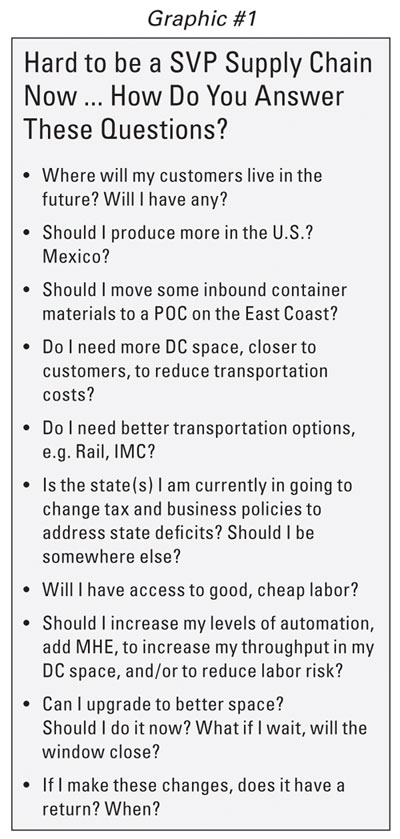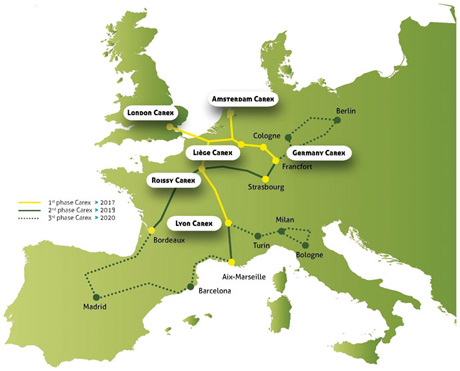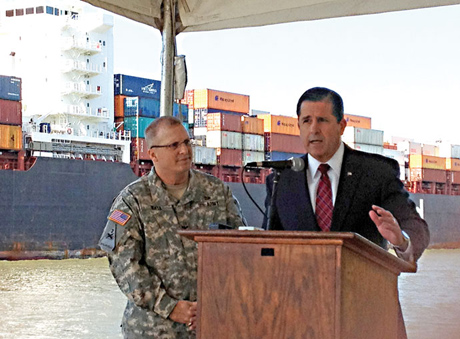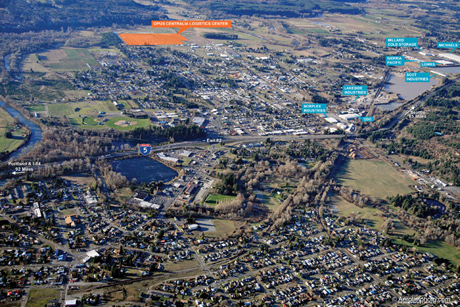The adage that location, location and location are the three most important considerations in real estate remains tried and true. However, the important factors that determine the right sites for industrial investment are anything but static, especially when it comes to the logistics and distribution world today.
Consumer demand patterns are shifting rapidly, affecting shipping requirements, order cycle times, retail formats and service level requirements. Rising fuel and utilities costs, burdensome regulations, changes in tax laws and sustainability requirements, labor supply and union issues, municipal and state economic incentives and so many other cost considerations are volatile and challenging today. (See graphic #1)

The important factors in site selection continue to remain unstable — with little sympathy for the decision-makers trying to get their arms and minds around the intricacies and uncertainties. From our perspective at Cushman & Wakefield, Inc., it has never been more challenging than it is right now to be a supply chain manager or a manager of a company’s facilities strategy. Nor has it been more important to acknowledge the vital connection between supply chain and site selection when crafting a sound business strategy.
In many cases, up to 80 percent of supply chain costs are locked in by the choice of location. While actual real estate costs will always be a major consideration, they represent just one of many components that must be weighed. It is imperative that companies have a clear understanding of the total landed costs of their decisions in order to survive and thrive in these challenging economic times.
This makes site selection the critical evolutionary point of a good supply chain strategy. As such, paradigm shifts related to the principal key drivers of supply chain dynamics should be prompting changes in site selection. But are they?
The Trends That Drive Strategy
Global demand is changing. Certain world markets — Latin America and China among them — are seeing significant growth in population and, therefore, buying power. Within specific geographies, a push toward urbanization is affecting where people shop. And, of course, the rapid, steady rise of e-commerce is changing how and where consumers procure goods.
The evolution and cost of labor markets also continues to be of vital consideration. There are fewer industrial workers today as a more demanding — some say “coddled” — generation replaces retiring Baby Boomers in the work force. Additionally, labor is becoming more expensive. Still, global dynamics are helping change the fortunes of manufacturing here in this country. U.S. manufacturing wages were 22 times that of China as recently as 2005. Today that wage gap multiplier is under 10 and will likely be under five by 2015. (See graphic #2)
Labor is always an important topic, but other supply chain costs related to transportation and utilities are equally important:
• Fuel prices are back near their 2008 high. Trucking industry experts expect a significant rise, with volatility, in pricing in the next 18 months. Add to that driver shortages, tightening regulations and increasing highway congestion, and it becomes easy to see why the trucking industry is under significant pressure.
• Utilities costs continue to rise as well. At the same time, there is great geographic variability — in some cases more than 100 percent — across the United States. Electricity may be as low as five cents/kWh in one location and up to 15 cents/kWh in another. (See graphic #3)
Finally, it is important to address the increasing success and popularity of third-party logistics providers (3PLs). 3PL industry gross revenue has skyrocketed over the past 16 years, from $30.8 billion in 1996 to an estimated $142.2 billion in 2012. 3PL activity in 2010 represented 10.6 percent of logistics spend in the United States, up from 6.8 percent in 2001. Richard Armstrong, chairman and CEO of Armstrong Associates, Inc., which publishes “Who’s Who in Logistics,” told us recently that the 3PL industry is progressing well domestically and that the growth is still ahead of GDP growth. (See graphics #4 and #5)
This outsourcing of warehousing and transportation represents a significant and ongoing operating model change. In many cases, this is a response to a desire by more goods producers and shippers to focus on their core competencies.

Mike Jones, president of St. Onge Company, a world-recognized supply chain strategy and logistics consulting firm based in York, Pa., and a Cushman & Wakefield strategic partner, has observed that smaller companies and companies new to e-commerce tend to utilize 3PLs more in order to tap into their expertise in direct-to-consumer shipping and piece-picking. He also indicated that larger big-box retailers, however, are more accustomed to complex distribution and tend to self-perform more often.
Evidence suggests that the increased use of 3PLs is a response to uncertainties in the market. 3PL revenues as a percent of U.S. logistics spending have risen during the most recent recession periods (a full percent between 2001 and 2002 and 2 percent between 2007 and 2010).
Some Logical Responses
With all of this in mind, we are seeing some logical changes. Among them, manufacturing companies are beginning to think differently about location. A project that five years ago would have considered only China due to value of labor may now today be looking at Mexico. A project looking at Mexico may now, for various reasons, including security, also be looking at the southeastern United States.
For example, a large plastics company retained Cushman & Wakefield’s Global Business Consulting group in early 2011 to assist in the site search for a new facility to produce plastic dispensing systems for its food and beverage business line. For this client, labor market considerations, proximity to customers in the central and eastern United States, and cost (occupancy, freight, utilities, labor and incentives) were critical factors. In 2011, the client closed on the purchase of an existing 317,834-sq.-ft. (29,527-sq.-m.) building in North Carolina. The property ultimately offered the lowest operating cost environment and a superior work-force outlook.
In early 2011, Pharmavite engaged Cushman & Wakefield to identify and recommend a location for a new tablet and softgel production facility to serve the company’s growing production requirements and its eastern United States customer base. Ultimately, a greenfield build-to-suit site in Opelika, Ala., was selected for its favorable structural operating conditions and facility costs, as well as qualitative labor-market traits indicating the presence of relevant occupations/industries and lower union presence. Pharmavite broke ground on its state-of-the-art nutritional supplement facility in October 2011.

Companies are currently considering alternatives when it comes to their distribution networks as well, with an emphasis on:
• Fewer miles, more space overall and proximity to populations;
• Fewer employees, more equipment and higher focus on labor value;
• Fewer trucks, more boats and trains and increased value on multi-modal access;
• Fewer full truckloads, more parcels and added development for e-commerce space.
Several infrastructure development shifts related to these new priorities also are worth noting. Secondary markets — including Kansas City, Miami and Houston — are leading the charge with large investments in intermodal capacity to accommodate the movement of freight via several modes of transportation. While these markets do not have the consumer population of the more traditional distribution markets like the Inland Empire or the I-81 corridor, they are starting to attract distribution business because of their other assets.
Additionally, the expansion of the Panama Canal has become a driving speculative force for port infrastructure activities across the southeast region. With two-thirds of the U.S. population located east of the Mississippi River, the speed and cost-savings advantages of all-water shipping vs. overland shipping from the West Coast likely will result in some increased vessel traffic to eastern ports.
What’s Happening
What should this mean for real estate? For one, with so much uncertainty, we would expect a notable jump in short-term versus long-term lease commitments among space users. We should see a decreased emphasis on horizon-time thinking, if not less willingness for users to think of industrial real estate as a viable investment asset. From an institutional perspective, changing distribution patterns would be sure to attract investment in the aforementioned emerging secondary markets.

In reality, activity is all over the place.
Cushman & Wakefield tracks the top 35 distribution markets in the United States and identifies companies actively pursuing the lease or purchase of manufacturing and distribution space in excess of 100,000 sq. ft. (9,290 sq. m.). At the time of this article, we were following 702 active searches. This includes 111 searches of a minimum of 150,000 sq. ft. (13,935 sq. m.) in Southern California alone.
Approximately 20 percent of these searches are believed to involve 3PL firms. Nationally, 24 space users are seeking a minimum of 1 million sq. ft. (92,900 sq. m.). These largest requirements are made up predominantly of companies in the food and beverage industry, big box retailers and e-commerce. SupplyChainBrain magazine estimates that one third of all big box activity is being driven by e-commerce, and our findings bear that out.
Yet the length of lease terms varies dramatically across the board. Some of our clients like shorter commitments, which allow more flexibility and agility in their supply chain. They may want to better understand the direction of the economy when making decisions and are willing to pay more for their facilities to keep their options open.
In some cases, rapid changes within a company can make short-term decisions more desirable. A Cushman & Wakefield colleague recently completed a very large lease for a personal care products company.
His client went with a three-year lease — not because management was concerned about the economy or the direction of the company, but because of the rate at which they are expanding. Three years from now, they may need even more space than that site can accommodate, or they may want two distribution centers in different locations, leaving them more able to respond to the challenges cited earlier.
On the other hand, companies that have significant material handling costs or who are comfortable with a strategic location tend to own or commit to longer term leases to realize the cost savings. An automotive parts company recently signed a 20-year lease in Southern California. Knowing that rates are lower now and likely will rise, and knowing that this market will remain critical to the company’s supply chain, made this long-term deal a “no brainer.”
A number of big-box space users also continue to own their distribution centers. While this limits flexibility, many companies simply want to keep within their corporate mandates or tradition. While a sale-leaseback model could provide flexibility and generate additional income, some owners are cash heavy and simply not interested.

From an institutional investment perspective, interest in certain secondary markets continues to be strong. Greg Vorwaller, executive vice president and global head of capital markets at Cushman & Wakefield, explains that capital follows tenancy, subject to good term and solid covenants. As an example, Indianapolis, Ind., currently has three speculative buildings under construction totaling 1.85 million sq. ft. (171,865 sq. m.) with another two buildings totaling 1.35 million sq. ft. (125,415 sq. m.) ready to break ground. Low vacancy rates (5 percent) and strong leasing activity have combined to create a need. The central location of Indianapolis, favorable work environment, access to the second largest FedEx hub in the U.S. and competitive rates have companies like IDI, ProLogis and VanTrust taking advantage of the opportunity.
Why the Disconnect?
Differing business principles may be driving the disconnect between reality and what theory indicates is supposed to happen. We may be entering a paradigm where “typical” is becoming harder and harder to define.
Socio-economic issues certainly come into play, and we are seeing a great deal of volatility in the socio-economic landscape in this country. Here in the U.S., economists say that the recession is over, but clearly businesses are still waiting for a full recovery.
Meanwhile, global economic uncertainty continues. Surely, this much being unknown is as good a reason as any for why changes are lagging behind theory.
